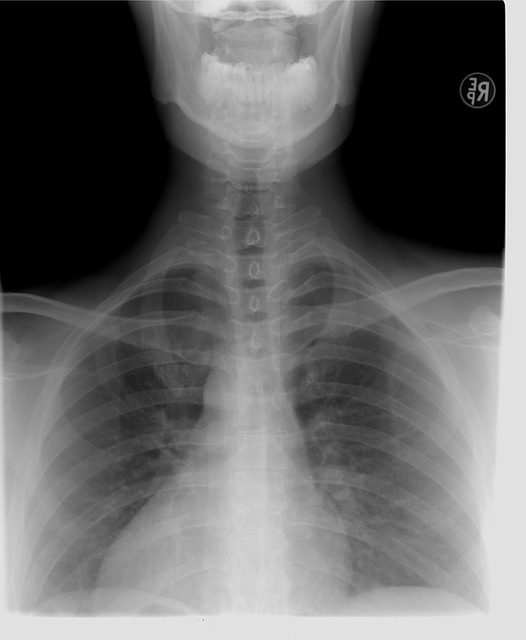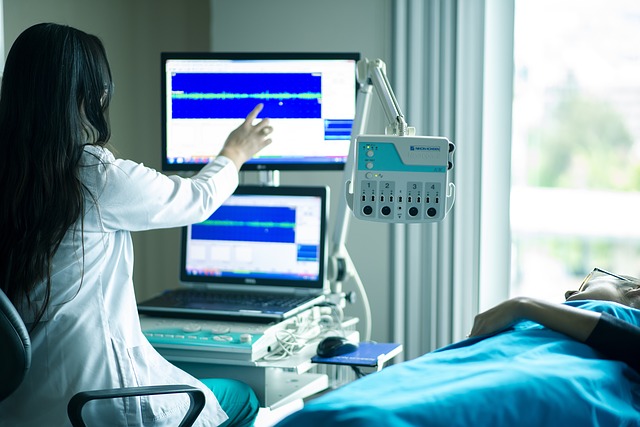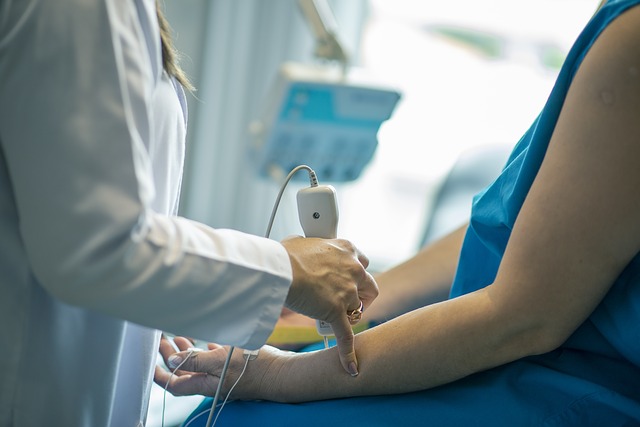The following scenarios, coding examples, and medical reports are theoretical.
Some were simplified for space while others are included only as teaching examples.
Example 1
Let’s begin with a quite straightforward visit to a doctor.
So, the patient is in his late 20s and visits this doctor for the first time.
He had a cough, fever, slight chest pain, and difficulty breathing.
The following is a hypothetical medical report:
“The patient is a 27-year-old white male.
Not an established patient.
Weight is 220lbs, height, 74 inches.
The patient reports being allergic to penicillin but has no other outstanding medical history.
Exercises moderately, does not smoke.
The patient presents with cough, chills, headache, difficulty breathing, and fever (101 degrees).
Stethoscope examination yields heavy rales.
The percussion test on thorax suggests buildup in the lungs.
Suspected Streptococcal pneumoniae.
Obtained a blood sample for Antistreptolysin O titer.
The results show the ASO level above 200.
Streptococcal pneumoniae diagnosis confirmed.
Prescribed two weeks of 500mg azithromycin (Zithromax).
A follow-up scheduled for next week.”
Let’s start breaking down the information.
The first code we can determine right away is the diagnosis.
The doctor’s diagnosis is streptococcal pneumoniae.
Keep in mind, the definitive diagnosis should always be coded.
That means we wouldn’t code the fever, cough, and other symptoms unless the doctor came to a definitive diagnosis.
To get the right diagnosis code, we need to go to the ICD-10-CM manual.
We have to look in the range J00-J99, which contains Diseases of the Respiratory System.
In this section, we find the code J13 – pneumonia due to Streptococcus pneumoniae.
This is the code we need:
Pneumonia caused by streptococcal bacteria.
Here, we don’t have any subcategories or subclassifications.
Our diagnosis code is J13.
Remember that you can also look up Streptococcus Pneumoniae in the ICD-10-CM alphabetic index.
For better instruction, we’re providing an example with a long route.
Next, we move to the procedure codes.
Here we have a couple.
First, the patient is new with an unspecified condition.
This is an Evaluation and Management procedure.
Second, we know that the doctor performed a test to confirm the diagnosis.
The test is pathology and laboratory.
We’ll start with the E&M codes.
It may seem that medication prescription falls under another procedure category, but it’s a part of the E&M process.
The basic examinations that the doctor performed do too (the thoracic percussion and the use of the stethoscope).
Each of them is a part of the History, Exam, and Medical Decision-Making parts of the E&M codes.
They are often abbreviated to HEM.
The doctor learned the patient’s history, performed a variety of exams, and made a medical decision to prescribe antibiotics.
When picking E&M codes, you should consider the intensity of the evaluation and patient management.
You can assess that by the time the doctor spent with the patient, or you can evaluate the amount of work going into the HEM.
The level of intensity of the procedure (and the time) is listed in the description of the E&M codes.
Here, the patient is new, so more “history” will be involved in the HEM section.
It would go with an accurate examination.
The medical decision to prescribe antibiotics by oral administration is relatively low-risk.
So the procedure in the E&M would be of low to moderate complexity.
With the fact that the patient is new, we need to look for codes in the appropriate subsection of E&M.
Our E&M code will be 99203 for “detailed history; a detailed examination; medical decision-making of low complexity”.
However, the doctor also performed a test to confirm the diagnosis.
Which code is that?
Since the sample was taken from the patient to test, we know this is the Pathology Section of the CPT code set.
Here’s some medical background for this.
The test in the medical report was ASO, or Antistreptolysin O, titer.
A titer is a type of test.
ASOs are antibodies created by the immune system to resist the streptococcal bacteria.
There are typically 200 ASO units in the human body as a baseline.
If the test shows a higher level of ASO, it usually indicates the presence of the strep bacteria.
In the immunology subsection of Pathology, we can find the test for ASO.
At the back of the CPT manual, we could also look through the index to find antistreptolysin.
Both ways we would come to the CPT code 86060 for “antistreptolysin; titer”.
Next, we need to work on the medication prescribed to our patient.
This will be a part of the medical decision-making process.
Prescribing antibiotics is a decision made by a doctor for a patient.
If we wanted to add the E&M code to provide the payer with more information, it can be done pretty easily.
Before, we discussed that Category II CPT codes are helpful for performance management and administrative purposes, but they are also used in informational settings.
These codes are optional.
They are added to the codes of Category I with a hyphen.
We’d search the Category II code in the index under the section “antibiotic administration”.
We would get the code 4120F for “antibiotics prescribed or dispensed”.
We’d turn to Category II to confirm this.
So, we add the Category II code 4120F to our E&M code 99203 and get 99203-4120F.
This stands for a new patient visit of low complexity, with the prescription or dispensation of antibiotics.
So we end up with codes:
Procedure.
99203-4120F (E&M).
86060 (Pathology).
Diagnosis.
J13.
These would be entered in a superbill, which includes:
- The provider information.
- The patient’s information.
- Diagnostic information.
- Procedure information.
The superbill is then sent to the medical biller to create a claim.
Here’s another example, this time, including surgery.
Example 2
Let’s start straight with the medical report.
This report will have a different format from the previous one.
Medical reports don’t have a uniform style, so coders may have to work with a wide variety of reports.
“CHIEF COMPLAINT:
Pain and swelling in the abdomen.
HISTORY OF PRESENT ILLNESS:
The patient, a 67-year-old female, presents to the emergency room with sharp and shooting pain in her lower abdomen and reported swelling.
The patient has nausea, fever, and has vomited.
The abdomen is firm and slightly distended.
The patient claims to have no history of abdominal disease, problems, or hernia.
PAST MEDICAL HISTORY:
The patient is taking anti-depressants, but otherwise, is physically healthy.
The patient states she has never been admitted with any abdominal issues.
CURRENT MEDICATIONS:
Wellbutrin, 5 mg daily.
ALLERGIES:
None.
SOCIAL HISTORY:
Used to smoke (using Wellbutrin to quit) and does not drink.
REVIEW OF SYMPTOMS:
As above.
PHYSICAL EXAMINATION:
- Vital Signs: Blood pressure is 150/88, with a fever of 102 degrees.
- Skin: Normal and warm and dry, except in the lower abdomen, where it is tight and swollen.
- Chest: no respiratory problems detected.
- Cardiac: the regular rhythm.
- Back: No abnormalities detected.
- Abdomen: is firm above the pelvic bones.
Patient experiences pain upon palpation.
Blumberg sign elicits a painful response, as does a forced cough.
The abdomen is tight and swollen.
INTERVENTION:
Physical examination indicates appendicitis.
Ultrasound tests conducted, and the appendicitis diagnosis confirmed.
The patient is rushed to surgery and prepped for general anesthesia.
After anesthesia is applied, the patient receives an appendectomy via laparoscopy.
Examination during surgery reveals no sign of local or general peritonitis.
After surgery, the patient is taken to the observation room, then, to a hospital room.
The patient responds to the surgery well and is discharged later that night with a pain medication prescription.
Diagnosis: Acute appendicitis.”
As you can see, this report is more involved than the first one.
The procedure, though, is pretty direct, so we can get right to it.
So, we’ll start with a diagnosis.
As stated, the diagnosis is acute appendicitis.
We’ll look for Diseases of the Digestive System to find it in the ICD-10-CM.
In this section, we look for the code for acute appendicitis: K35.
That code comes with multiple subcategories.
As the medical report stated, there was no sign of peritoneal complications.
So our diagnosis code is K35.80 for unspecified acute appendicitis.
Let’s get to the procedure.
We will start with E&M again.
This code is for emergency department services.
Like outpatient and office codes, emergency codes are used depending on the risk or intensity of the procedure.
When the patient checked-in, there was no direct threat to her life, but if appendicitis went septic, her life would be endangered.
Considering this, the E&M code we pick is 99284 for a visit for a condition that “requires urgent evaluation by the physician…. but [does] not pose an immediate significant threat to life or physiological function”.
This is not the end of procedure coding.
As the medical report indicates, the emergency department preformed an ultrasound to confirm the diagnosis and a surgical procedure with general anesthesia.
That brings us three more codes:
A code for ultrasound from the Radiology section, a code for appendectomy from the Surgery section, and for general anesthesia, the Anesthesia code.
We’ll start with ultrasound.
Diagnostic ultrasounds are in the Radiology section after diagnostic radiology (for example, x-rays).
We find the diagnostic ultrasound for the abdomen, which is 76700, for “an ultrasound for the entire abdomen”.
This is close, but not quite what we need.
Below this code, you will find the code 76705, meaning a limited abdominal ultrasound of a single organ or quadrant.
This is what we need.
So our Radiology code is 76705.
Moving on to Surgery.
This section is relatively straightforward.
We can find the procedure based on the side of the body where it was performed.
In our example, we go to the digestive system – the appendix is attached to the large intestine.
We find the codes for the appendix, including excision, incision, and laparoscopy.
We need an appendectomy done via laparoscopy.
So we will look for laparoscopy codes and choose 44970, laparoscopy, surgical, appendectomy.
Every surgery comes with some type of Anesthesia code.
The report indicated that the patient received general anesthesia.
But we will select the code based on the area on the body where the surgery was performed under the anesthetic.
So our code is in “Lower Abdomen” in the Anesthesia Section.
We need to choose 00840, Anesthesia for intraperitoneal procedures in the lower abdomen including laparoscopy; not otherwise specified.
With each Anesthesia code, we also need a physical status modifier.
They are located in the Anesthesia section and are added to the code to describe the patient’s condition.
In our case, the modifier is P3 for severe systemic disease (since appendicitis can go septic and become life-threatening, it’s treated as severe).
So the Anesthesia code is 00840-P3.
We end up with:
Procedure.
99284 (E&M).
76705 (Radiology).
44970 (Surgery).
With 00840-P3 (Anesthesia).
Diagnosis.
K35.80 – Unspecified acute appendicitis.
This information, together with the provider’s information (the hospital), patient information, and prices, will be included in a superbill.
Then, we send it to the medical biller.
Read the full guide: How to Become a Medical Biller and Coder




